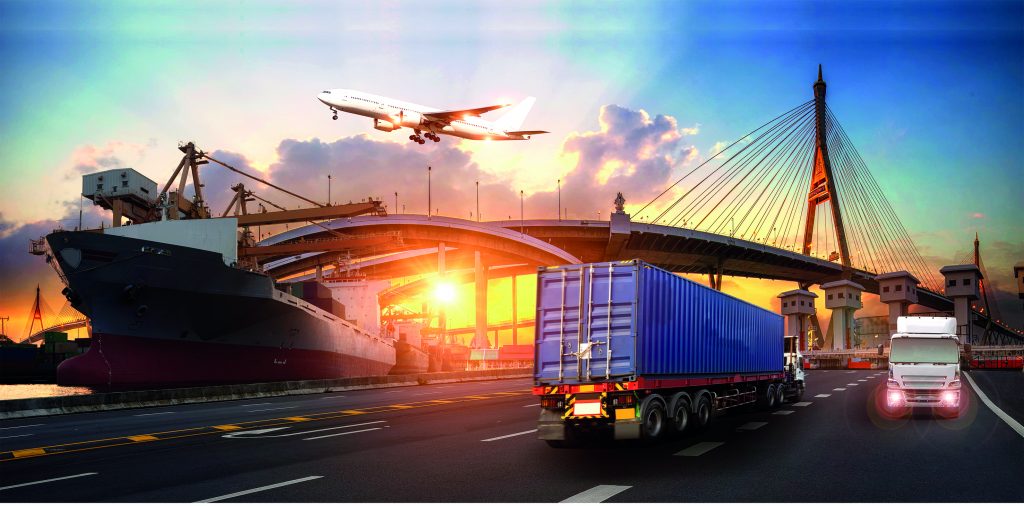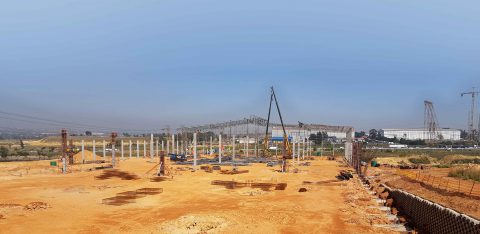Freight, Logistics and Warehousing
Key Challenges
Transport costs
“Fuel is an important cost variable for the transport industry,” says Stephan Krygsman, associate professor in the Transport Economics Department at Stellenbosch University. “But, in the long term, the trend is to replace fossil fuels with more sustainable alternatives like electricity or alternative fuels. “Transport firms are under pressure to replace older internal combustion engine technology with more fuel-efficient, alternatively fuelled or electric vehicle technology.”
Slowing world trade
The March 2020 Ctrack Freight & Transport Index shows that local freight volumes are down 5.1 per cent for the year to February. Internationally, the CPB World Trade Monitor and IATA Air Freight Market Analysis show world trade slowing at its fastest rate since the 2008/9 recession – even before the COVID-19 panic. “We need to understand the geopolitical environment: Who will trade with whom?” says Krygsman. “This will determine South Africa’s future prospects, and our ability to be part of global sourcing and development. Before COVID-19, Asia was responsible for international trade trends. Will this change back to the USA or the EU? Will Africa be part of these developments?”
Linda Reddy, supply chain director India, Africa and Middle East for Nando’s, sees this global slowdown as an exciting opportunity for local companies. “The way we look at supply chains is increasingly to look for local suppliers,” she says. “We currently depend on certain countries for raw materials because their efficient production and distribution models result in low prices or because we don’t produce these materials locally. I am excited that South African companies will look more at local sourcing. We will support our local suppliers to embrace these commercial opportunities quickly.”
State infrastructure and supply chains
“Loadshedding affects several aspects of our business,” says Linda Reddy. “Production, traffic, receipt and deliveries are all affected. We deliver fresh chicken to our restaurants daily and disruptions impact us acutely. This, together with water shortages and interruptions at some of our major poultry suppliers, makes working in the current South African infrastructure climate very challenging. ”
Stock control and replenishment
“A robust supply chain can withstand shocks, such as the current disruption caused by the COVID-19 pandemic and the demand for soap, hand sanitiser and food,” says Myles Wakeham, professor of supply chain management at the IMM Graduate School. “Supply chains that have adopted Lean or Just-In-Time methodologies lack robustness; they have no extra slack to mitigate the effects of the unexpected. These businesses operate on razor-thin margins (of time, money, and resources generally) and their supply chains are very exposed to disruption.”
To build robustness, supply chains must balance cost-efficiency with flexibility and resilience. “They need to develop stronger relationships with other chain members instead of focusing on extracting the lowest prices from them,” says Wakeham. “The future is becoming more difficult to predict and supply chains need to be fit enough to mitigate the risk of these crippling disruptions.”
“Meeting the needs of the on-demand economy has never been more challenging for retailers: the rapidly increasing sudden demand for everyday goods has created substantial worldwide shortages,” says Neil Gouveia, Zebra Technologies sales director, Africa. “The supply chain faces rising demand, with a smaller workforce. It must be robust and flexible to continue delivering essential goods to customers. Zebra Technologies is helping our customers maximise productivity while enabling new workers to become effective with intuitive solutions that require limited training. The right technology that allows workers to move fast with tools that shorten onboarding time gives enterprises a critical advantage.”
Reddy says that COVID-19 has intensified managing the source of imported products. “At Nando’s we are increasingly managing the traceability and source of raw materials and finished products to have more visibility and control over our supply chain.”
Decline in economic activity
The current economic slowdown will ripple through the industry, as lower demand for transport, logistics and warehousing causes excess capacity. “This puts massive pressure on the tariffs and prices of operators, who will run at the lowest possible prices,” says Krygsman. “Continued excess capacity and low demand will mean big losses for all transport operators, logistical firms, warehouses, rail operators, and airline companies. They are in for a very tough year: some may not make it. South Africa had excess capacity before COVID-19 – this is a double whammy.”
But, says Reddy, the depreciating rand, while unfortunate in many ways, particularly for imports, makes SA exports very attractive, given the supply constraints and growing concerns regarding the viability of procuring goods from the East and EU. “It is time for manufacturers to lift their game and expand their horizons into new markets to boost local economic activity.”
Technology
“Rising labour costs have driven developments like scale economies and higher productivity,” says Krygsman. “As the cost of labour increases, technology will mitigate these increases. Think autonomous driving, and automation of warehouses and supplychain processes. Motor-vehicle technology will also reduce maintenance costs as electric vehicles are much more cost-effective to maintain.”
“As markets expand exponentially and 3D printing becomes more of a reality than a rarity, product design and production could be performed at a consumer’s home,” says Wakeham.
“Eventually this could extend to an office or home appliance. If so, the demand for logistics services like transportation, warehousing and demand management will decrease in line with the reduction in production.”
Changes in consumer behaviour
Instant gratification drives much shopping today. Changes in consumer behaviour are fuelling the need for “more agile, responsive, sustainable, customer-centric and cost-efficient supply chains,” says Wakeham. “Organisations must now produce and distribute goods so that they arrive at the right place, to the right person, in the right condition, at the right time and at the right price.” Massive increases in electronic shopping mean massive increases in home deliveries or deliveries to “click-and-collect” lockers.
“New transport modes or micro-mobility in the form of drones and e-scooters for short-distance logistic trips will hurt retailers with brick and mortar shops,” says Krygsman. “Fuel stations must look to the future, when demand for fuel will decline. But they are all in good locations and could easily become distribution points for online deliveries.”
In the COVID-19 environment, says Gouveia, there’ll be an acceleration of the reliance on e-commerce for food and other supplies.






 Sign-up and receive the Business Media MAGS newsletter OR SA Mining newsletter straight to your inbox.
Sign-up and receive the Business Media MAGS newsletter OR SA Mining newsletter straight to your inbox.